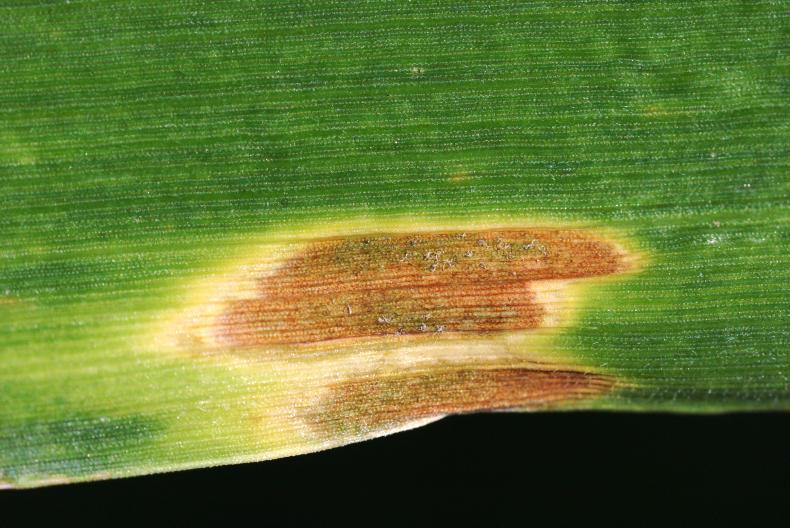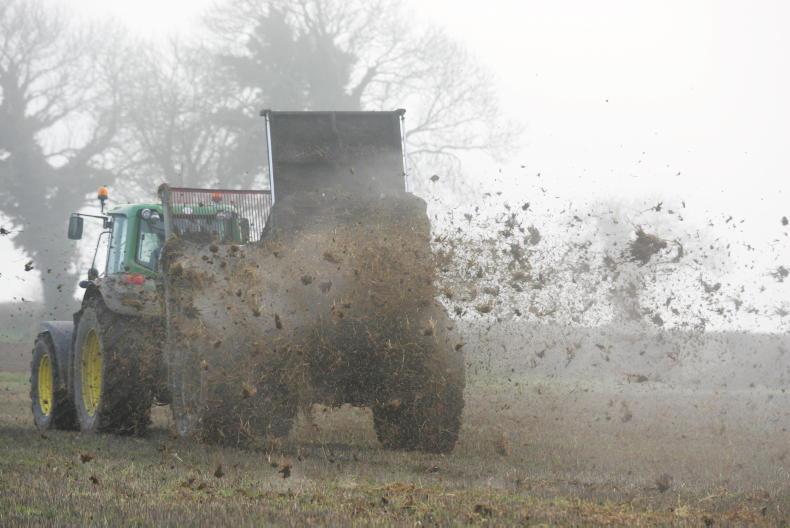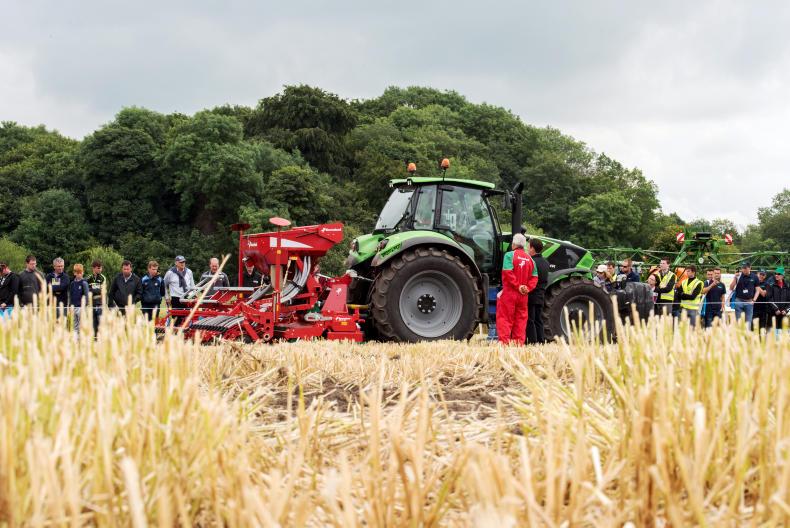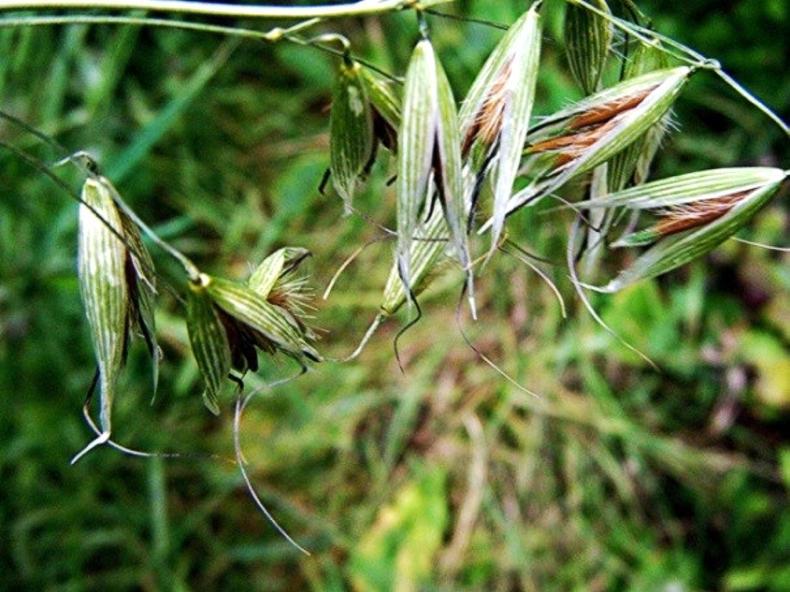Irish wheat crops have the potential to create the highest yields globally. This is achieved through a long grain filling period, ideal temperatures and an unlimited supply of moisture.
Unfortunately, these conditions are also perfect for the development and spread of diseases.
These can indirectly reduce this yield potential by attacking the plant and hampering its ability to capture sunlight.
This can take various forms.
Eyespot and take-all attack the roots or stems preventing the uptake of water and nutrients. Septoria and yellow rust attack the foliage, reducing green area and the ability of the plant to capture sunlight.
Fusarium infects the developing grain sites, reducing the final yield and quality.
Integrated approach
Irrespective of the disease, an integrated approach to control utilising variety resistance or tolerance, agronomy and fungicide is required.
Teagasc is engaged in an extensive programme detailing the impact of each of these components individually and in combination as an integrated disease control approach to the most destructive diseases of winter wheat in Ireland.
Undoubtedly, growing a crop that is able to resist or tolerate disease is the most effective method of control. Unfortunately, high levels of varietal resistance are often associated with a cost to yield – the most resistant varieties tend to have lower potential yields.
Furthermore, due to the dynamic nature of these diseases, strong levels of field resistance tend to either break down rapidly, such as yellow rust resistance, or over a number of years, such as septoria resistance.
Varietal resistance
For varietal resistance to become a cornerstone of control programmes, the association with lower yield potential must be broken or at least reduced.
Given the difficulty with chemical control of septoria, a small reduction in fully treated yield may be a price worth paying for increased resistance, as control of disease in very susceptible varieties is becoming increasingly difficult.
To ensure the longevity of improved disease resistance, both the means by which the wheat resists disease and how the disease evolves to overcome the resistance must be understood.
As septoria is the most destructive disease of Irish winter wheat crops, a programme examining both components is ongoing at Teagasc Oak Park, aiming to improve varietal resistance specifically for Irish conditions while ensuring that when deployed they won’t be overcome by the high septoria pressure often experienced in Irish crops.
Fungicides
In the absence of varietal resistance, fungicides will continue to be relied upon to control diseases in Irish wheat.
As it is important to protect the upper canopy and ear from disease, fungicide programmes that include applications when the final leaf three has emerged, followed by an application when the flag leaf has emerged and finally to protect the ear from disease are recommended.
Although a range of fungicides are available for use in winter wheat, due to the development of varying levels of resistance in septoria to most of these, you must ensure they are applied in a protective manner and in mixtures with one another and at the correct timings.
If the above approach is followed, it will remove the need for additional applications which increase both the cost of fungicide programmes but also selection for increased resistance to the fungicides.
As the resistance in the Irish septoria population to the most effective fungicides increases, the ability to reliably achieve control will decrease.
New fungicides are anticipated to be available in a number of years. However, due to the relatively slow arrival of new active ingredients and to avoid the development of resistance to these new products, we must learn from the past and reduce our reliance on fungicides as the main method of control.
As varietal resistance improves, this will become increasingly possible. The levels of varietal resistance available commercially (ratings of 5-7 on the DAFM RL) are not sufficient to reliably reduce the need for fungicide inputs.
While the industry waits for varieties which combine high yield potential, good agronomic characteristics and resist a spectrum of diseases, growers must incorporate all other measures that reduce the burden imposed on fungicides. This process should start with deciding what, when and where to grow winter wheat. If a location is prone to high disease pressure, it is essential to grow the most resistant variety available, delay planting as late as possible and ensure it is sprayed when required.
Read more
Focus supplement: Crops and cultivation
Irish wheat crops have the potential to create the highest yields globally. This is achieved through a long grain filling period, ideal temperatures and an unlimited supply of moisture.
Unfortunately, these conditions are also perfect for the development and spread of diseases.
These can indirectly reduce this yield potential by attacking the plant and hampering its ability to capture sunlight.
This can take various forms.
Eyespot and take-all attack the roots or stems preventing the uptake of water and nutrients. Septoria and yellow rust attack the foliage, reducing green area and the ability of the plant to capture sunlight.
Fusarium infects the developing grain sites, reducing the final yield and quality.
Integrated approach
Irrespective of the disease, an integrated approach to control utilising variety resistance or tolerance, agronomy and fungicide is required.
Teagasc is engaged in an extensive programme detailing the impact of each of these components individually and in combination as an integrated disease control approach to the most destructive diseases of winter wheat in Ireland.
Undoubtedly, growing a crop that is able to resist or tolerate disease is the most effective method of control. Unfortunately, high levels of varietal resistance are often associated with a cost to yield – the most resistant varieties tend to have lower potential yields.
Furthermore, due to the dynamic nature of these diseases, strong levels of field resistance tend to either break down rapidly, such as yellow rust resistance, or over a number of years, such as septoria resistance.
Varietal resistance
For varietal resistance to become a cornerstone of control programmes, the association with lower yield potential must be broken or at least reduced.
Given the difficulty with chemical control of septoria, a small reduction in fully treated yield may be a price worth paying for increased resistance, as control of disease in very susceptible varieties is becoming increasingly difficult.
To ensure the longevity of improved disease resistance, both the means by which the wheat resists disease and how the disease evolves to overcome the resistance must be understood.
As septoria is the most destructive disease of Irish winter wheat crops, a programme examining both components is ongoing at Teagasc Oak Park, aiming to improve varietal resistance specifically for Irish conditions while ensuring that when deployed they won’t be overcome by the high septoria pressure often experienced in Irish crops.
Fungicides
In the absence of varietal resistance, fungicides will continue to be relied upon to control diseases in Irish wheat.
As it is important to protect the upper canopy and ear from disease, fungicide programmes that include applications when the final leaf three has emerged, followed by an application when the flag leaf has emerged and finally to protect the ear from disease are recommended.
Although a range of fungicides are available for use in winter wheat, due to the development of varying levels of resistance in septoria to most of these, you must ensure they are applied in a protective manner and in mixtures with one another and at the correct timings.
If the above approach is followed, it will remove the need for additional applications which increase both the cost of fungicide programmes but also selection for increased resistance to the fungicides.
As the resistance in the Irish septoria population to the most effective fungicides increases, the ability to reliably achieve control will decrease.
New fungicides are anticipated to be available in a number of years. However, due to the relatively slow arrival of new active ingredients and to avoid the development of resistance to these new products, we must learn from the past and reduce our reliance on fungicides as the main method of control.
As varietal resistance improves, this will become increasingly possible. The levels of varietal resistance available commercially (ratings of 5-7 on the DAFM RL) are not sufficient to reliably reduce the need for fungicide inputs.
While the industry waits for varieties which combine high yield potential, good agronomic characteristics and resist a spectrum of diseases, growers must incorporate all other measures that reduce the burden imposed on fungicides. This process should start with deciding what, when and where to grow winter wheat. If a location is prone to high disease pressure, it is essential to grow the most resistant variety available, delay planting as late as possible and ensure it is sprayed when required.
Read more
Focus supplement: Crops and cultivation









SHARING OPTIONS